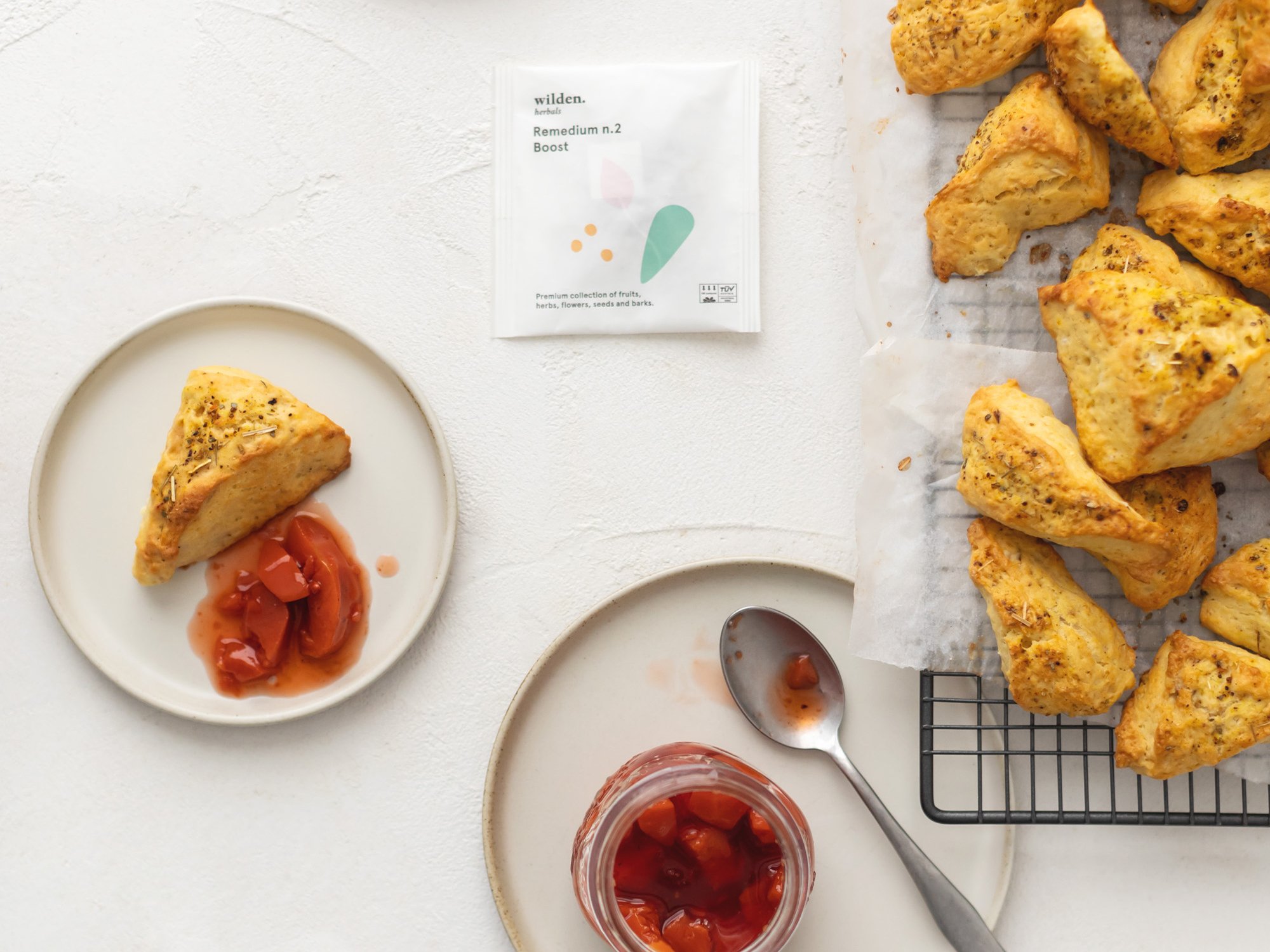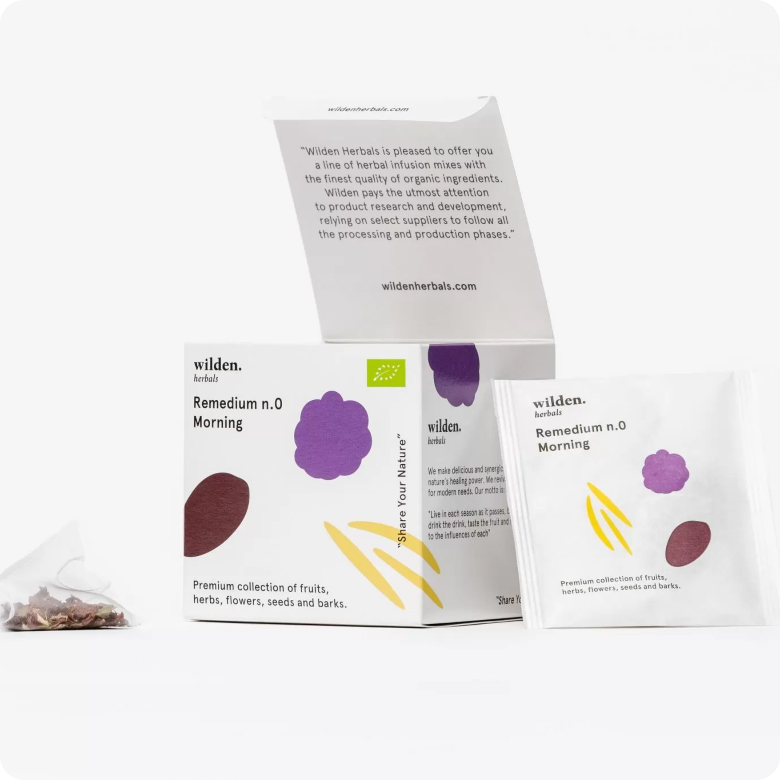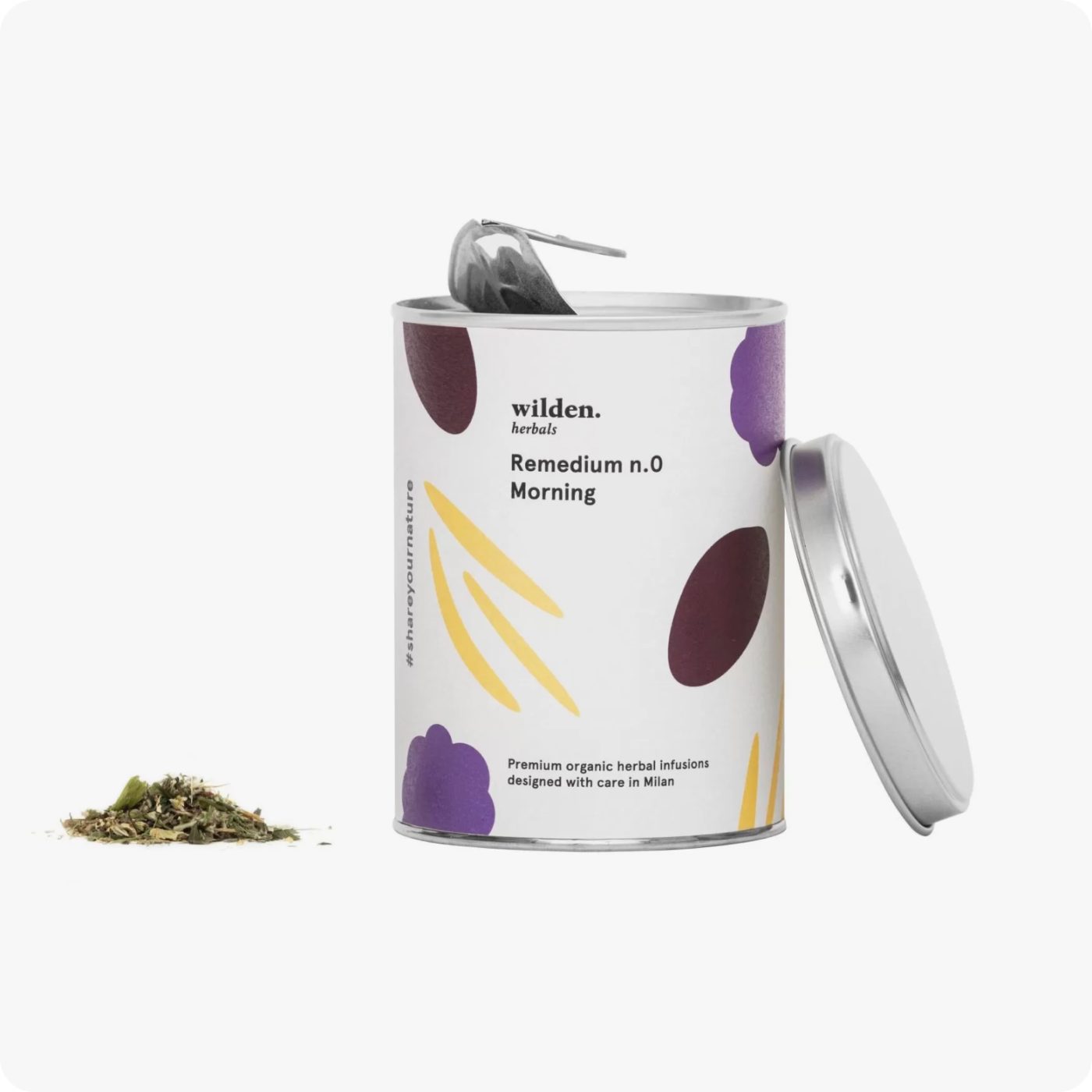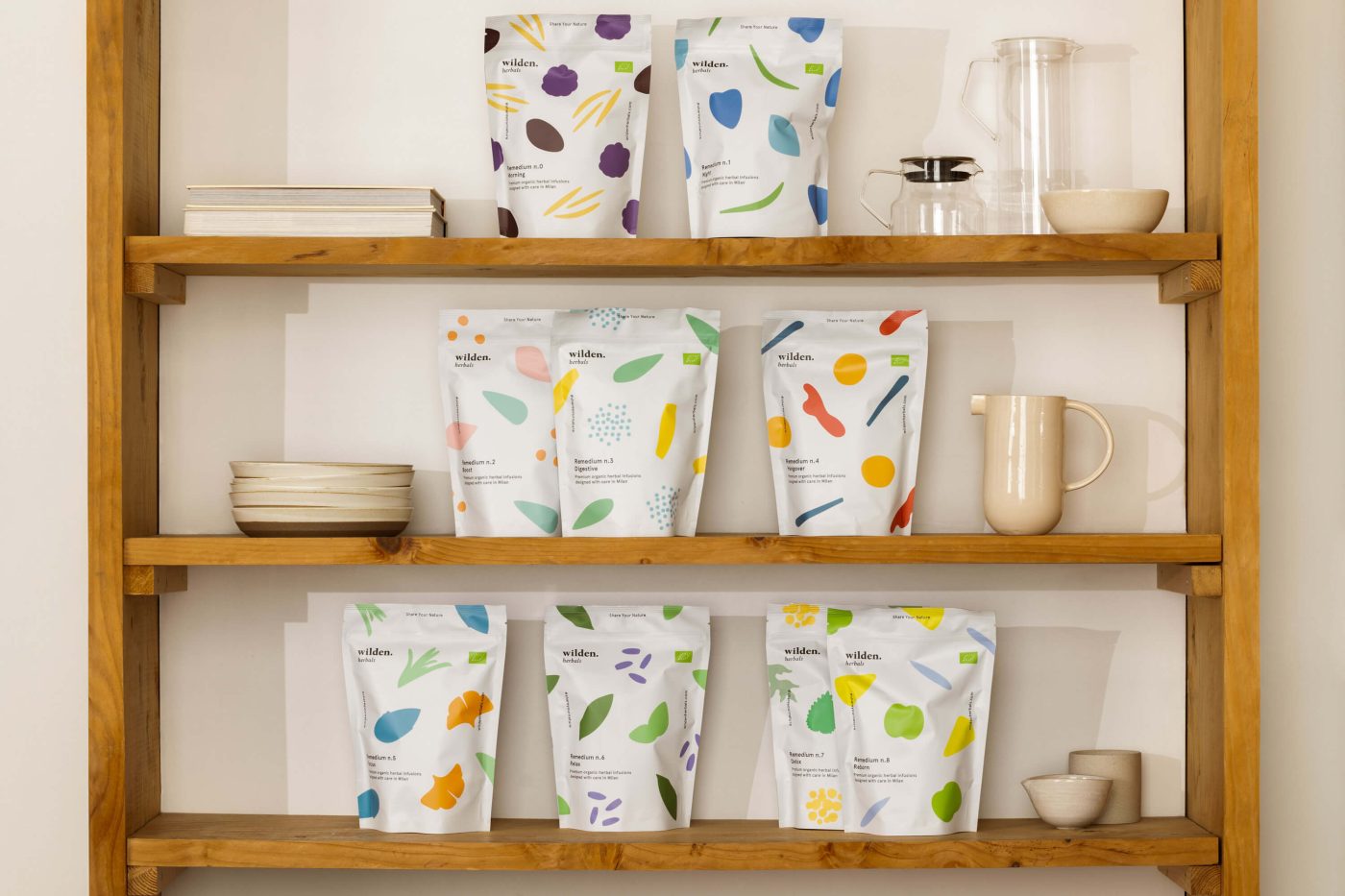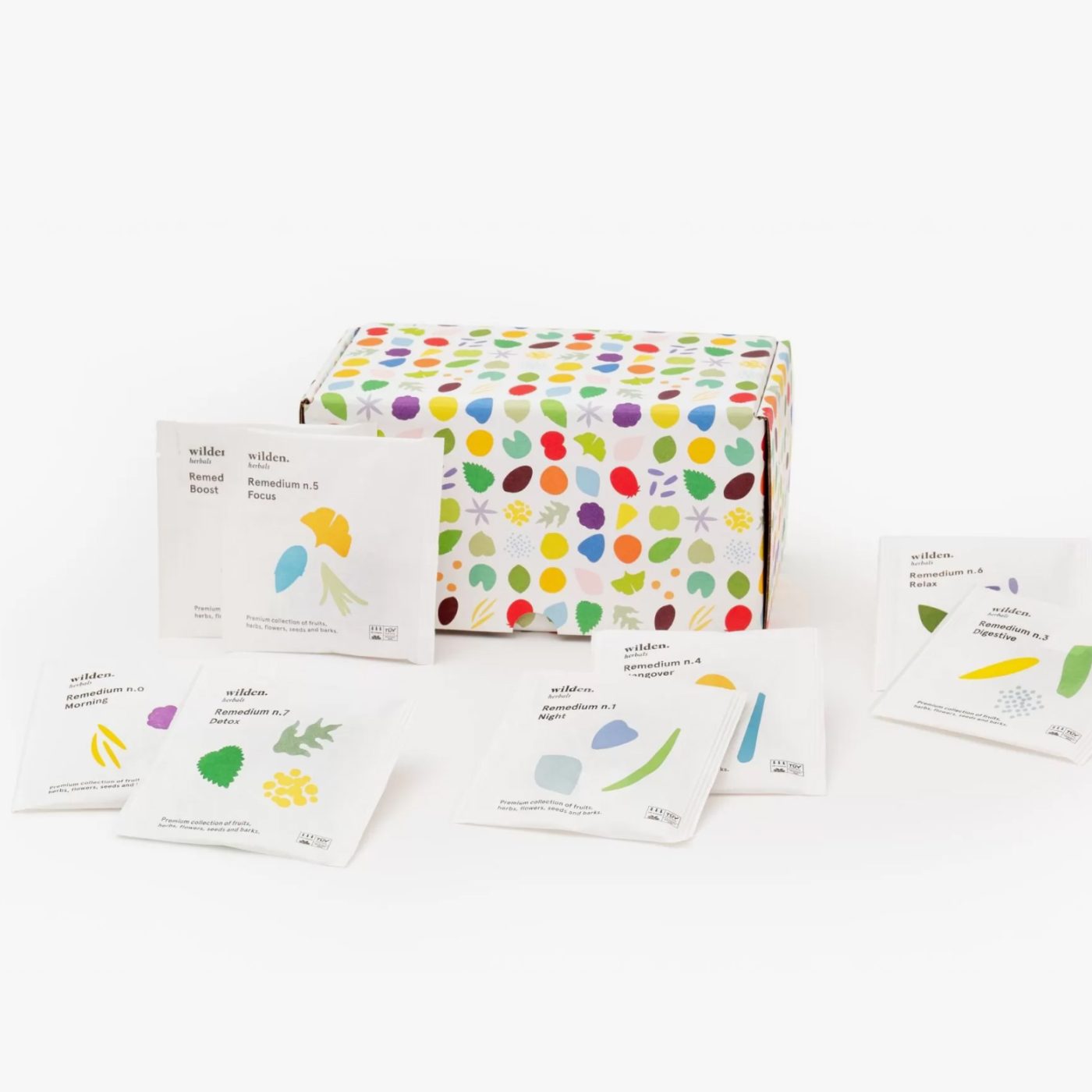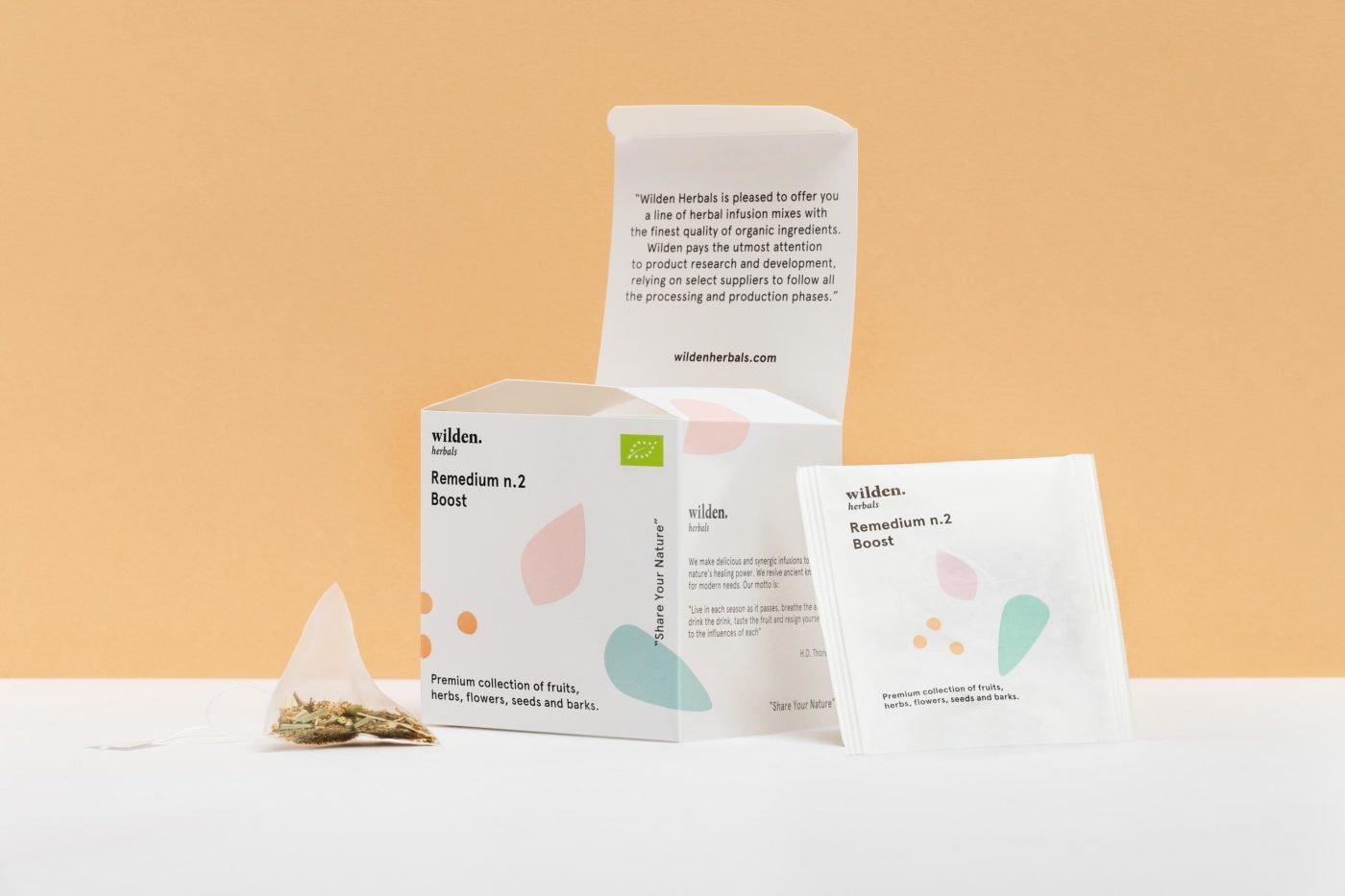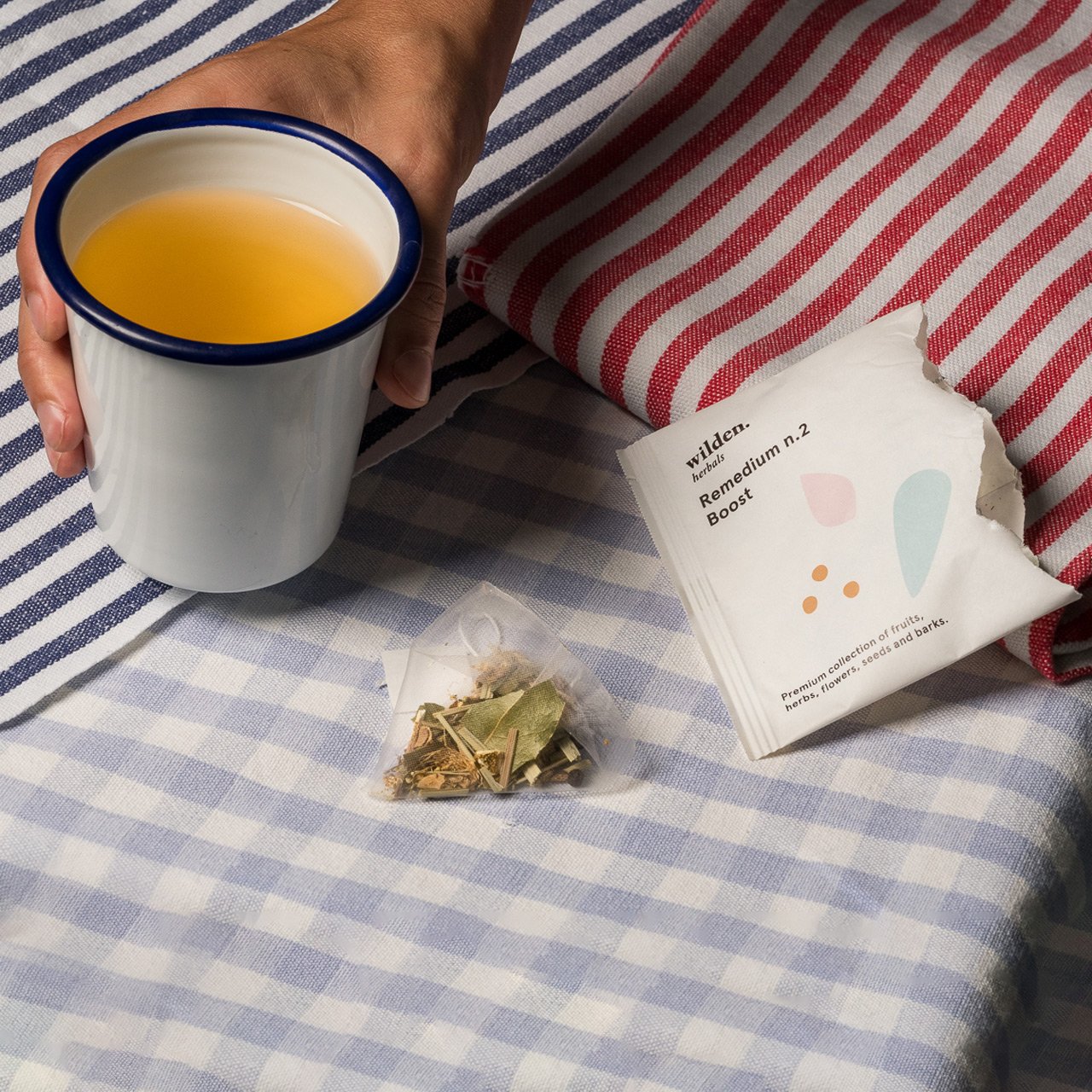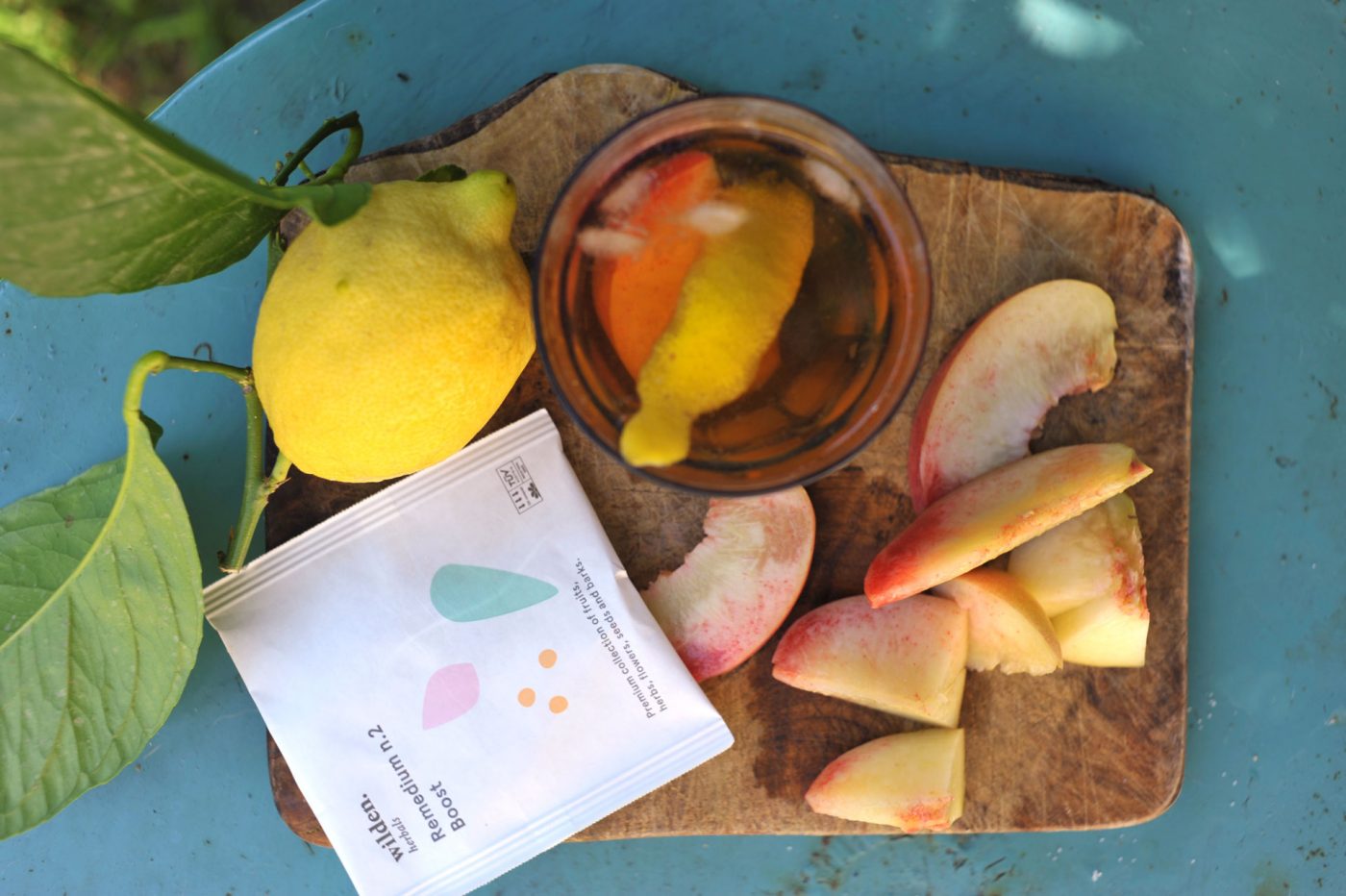Remedium #2 – Boost
From composition to benefits, Wilden.herbals chronicles its herbal teas one by one on a journey to discover the power of plants.
Remedium No. 2 – Boost is a blend with antioxidant and immune-stimulating properties that can boost immune defenses, protect the body from risk factors, and prevent and treat cold symptoms.
Remedium No. 2 – Boost is a blend of 9 herbs in which the pharmacological properties ofechinacea and turmeric are assisted by the action of other herbs such as elderberry andbay leaf. The active ingredients and fresh, pungent flavor of ginger are mixed with those of pepper, which is slightly spicy, the pleasant aroma of lemongrass, and the sweet taste oforange.
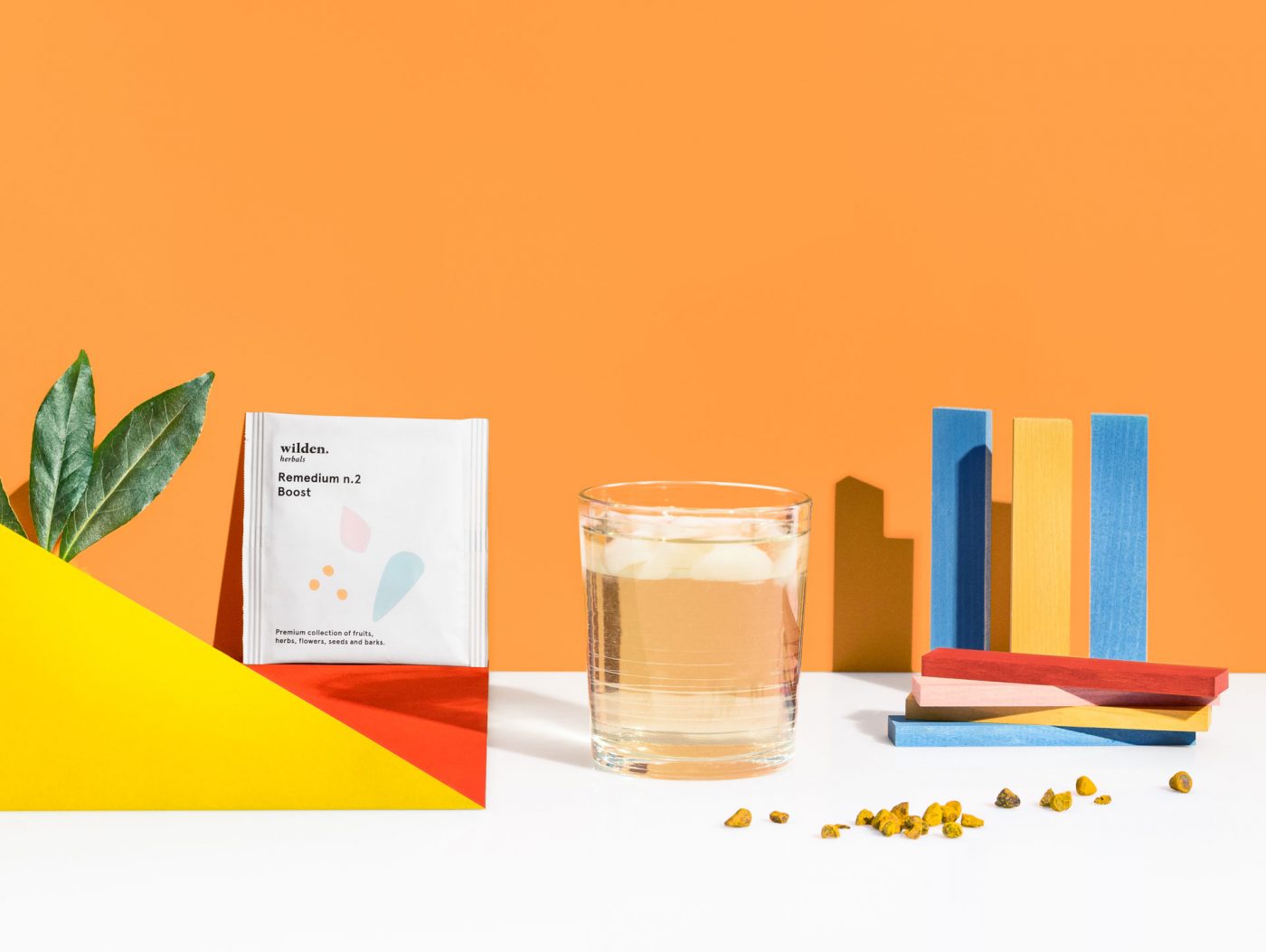
Echinacea, Echinacea pallida
Turmeric, Curcuma longa
Black pepper, Piper nigrum
Ginger, Zingiber officinale
Juniper, Juniperus communis
Lemongrass, Cymbopogon citratus
Elderberry, Sambucus nigra
Laurel, Laurus nobilis
Sweet orange, Citrus sinensis
This is the composition per 100g:
Echinacea, Echinacea pallida
Echinacea is an herbaceous plant in the Asteraceae family and native to North America. The flower and root of this plant are traditionally used in Native American pharmacopoeia. Known for its immune-stimulating and antiviral properties, the presence of polysaccharides helps boost immunity and treat symptoms of cold illnesses, supporting the body against infectious attacks.
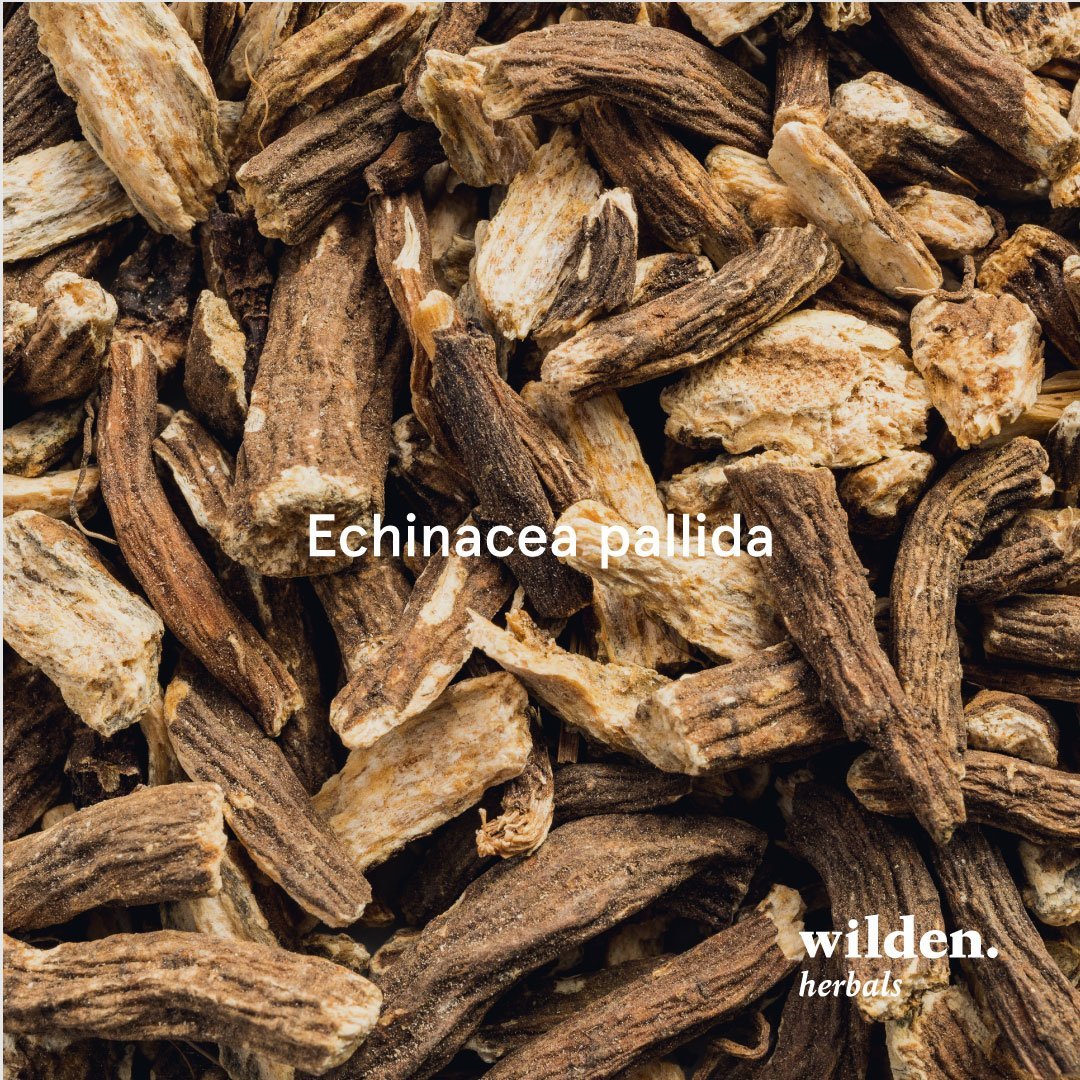
Laurel, Laurus nobilis
Laurel is an evergreen plant typical of Mediterranean areas. Thus, this infusion can be used to aid digestion in cases of flu, but also to relieve menstrual and rheumatic pains. A natural antioxidant, bay laurel can stimulate and strengthen the immune system thanks in part to its high vitamin C content, which has an antiviral effect. Due to its expectorant action, it helps with fever, sinusitis, cough and bronchitis.
Turmeric, Curcuma longa
Turmeric is a spice with a warm yellow-orange color and penetrating aroma that is widely used in Indian cooking. The name is derived from Sanskrit “kum-kuma” and Arabic “kour-koum,” meaning saffron, because of its similarity in color to the precious spice. Widely used in Ayurvedic medicine as a depurative, turmeric is recommended to improve liver health, eliminate excess cholesterol and facilitate digestion. It also has anti-inflammatory, antiviral, antibacterial, antifungal and antioxidant properties.

Black pepper, Piper nigrum
For centuries, the fruit of this plant represented an extremely valuable bargaining chip. In Ayurvedic medicine, black pepper is a powerful remedy for stimulating metabolism and eliminating toxins. It has antioxidant properties (piperine) and is good for “colds,” such as flu, cough, nasal congestion and fever. In addition, pepper facilitates the absorption of nutrients and combined with turmeric, as in this mixture, increases their bioavailability by up to 2000%.
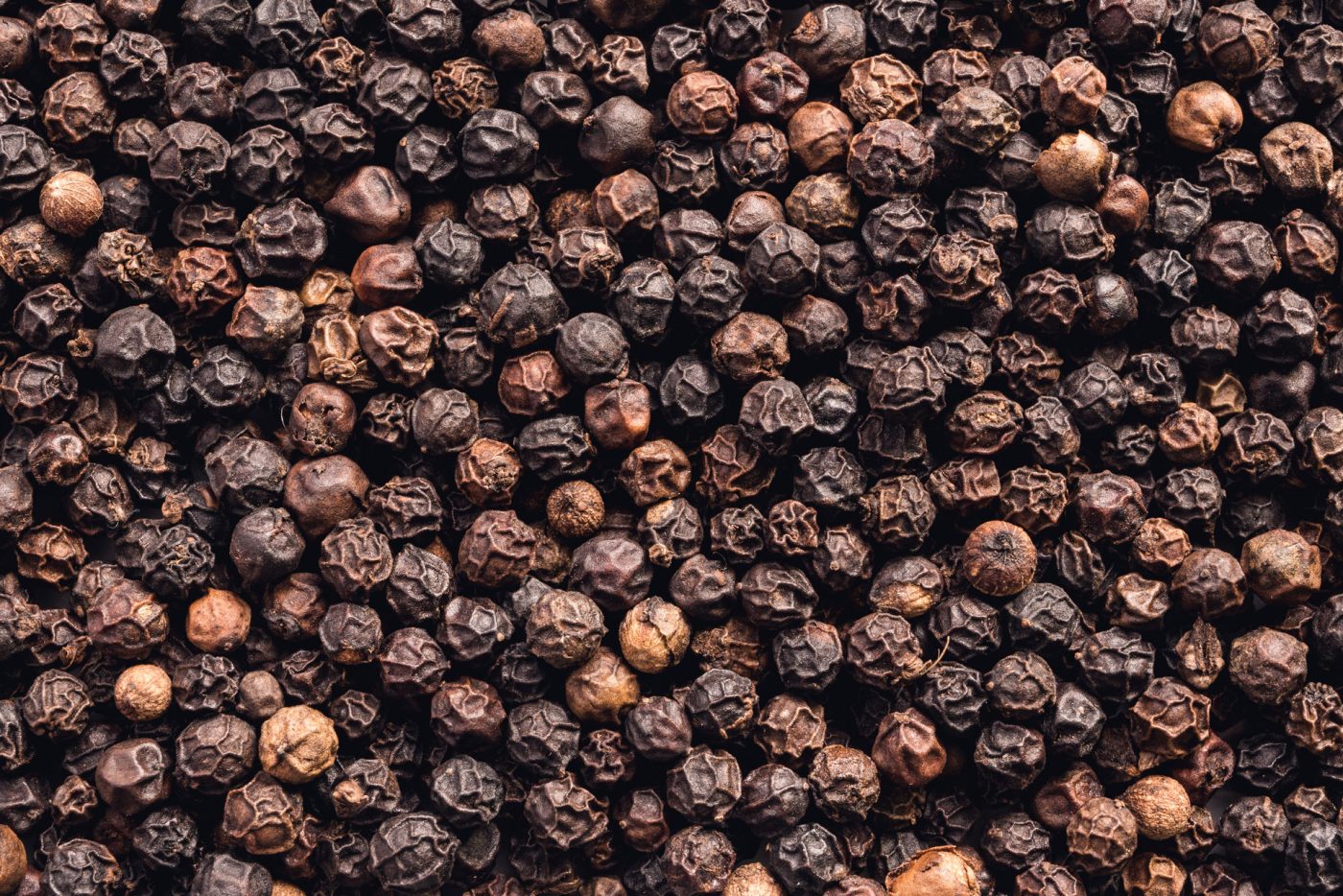
Ginger, Zingiber officinale
The rhizome of this plant native to the tropical forests of India and Southeast Asia is widely used both as a spice and as a traditional remedy. The active ingredients it contains (gingerols) make ginger an effective antioxidant against inflammation, congestion, coughs, colds and fevers. In traditional Chinese medicine it performs an action called “dispersing the cold” accumulated in the body.
Juniper, Juniperus communis
The essential oils found in juniper berries are used worldwide for their medicinal and therapeutic values. Their extraction and use is in fact an ancient practice. Juniper is a natural antiseptic for the urinary and respiratory tracts; over the centuries it has become prized for these natural therapeutic properties against flu symptoms and gastrointestinal dysfunction. Its oils have anti-inflammatory properties and are used as aerosols or for massage on contracted areas of the body.
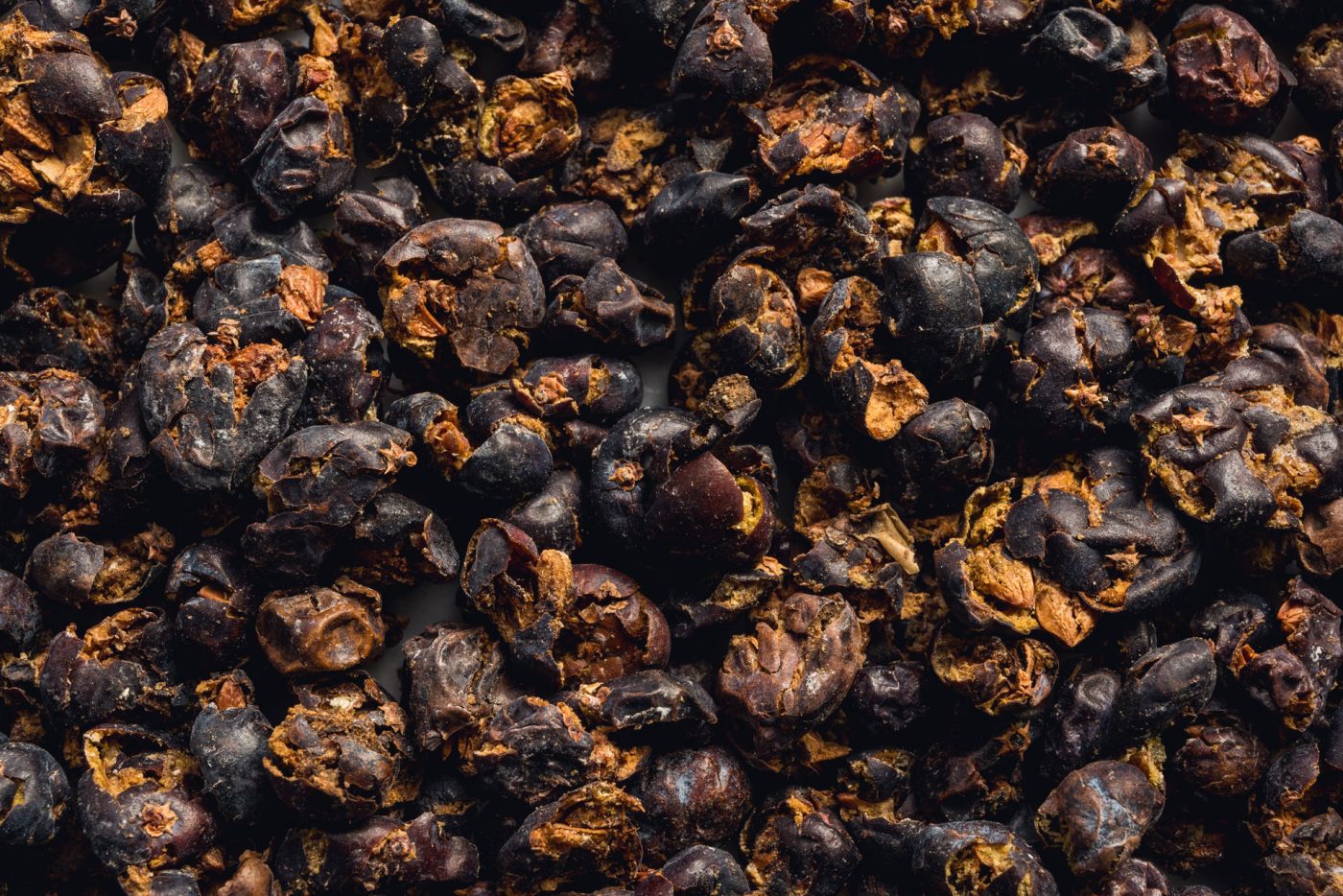
Sweet orange, Citrus sinensis
Orange peel is used for its properties as well as for its pleasant aroma. The active ingredients in the essential oil (hesperidin and limonin) in addition to a large amount of vitamin C and minerals such as iron and calcium are useful for strengthening our bodies, especially in the winter seasons. In addition, sweet orange, with its fragrant and thirst-quenching aroma, has aperitif, digestive and antispasmodic properties, useful for stomach pains.
Lemongrass, Cymbopogon citratus
This plant is an aromatic concentrate of essential nutrients and pharmacological properties with many health benefits. The components responsible for the lemon fragrance (limonene, citral) have antifungal and antibacterial properties. It is used in Ayurvedic medicine to strengthen the immune system and treat flu symptoms: cough, nasal congestion, fever, exhaustion, and headache. It has antioxidant and diuretic properties that help cleanse the body of toxins.
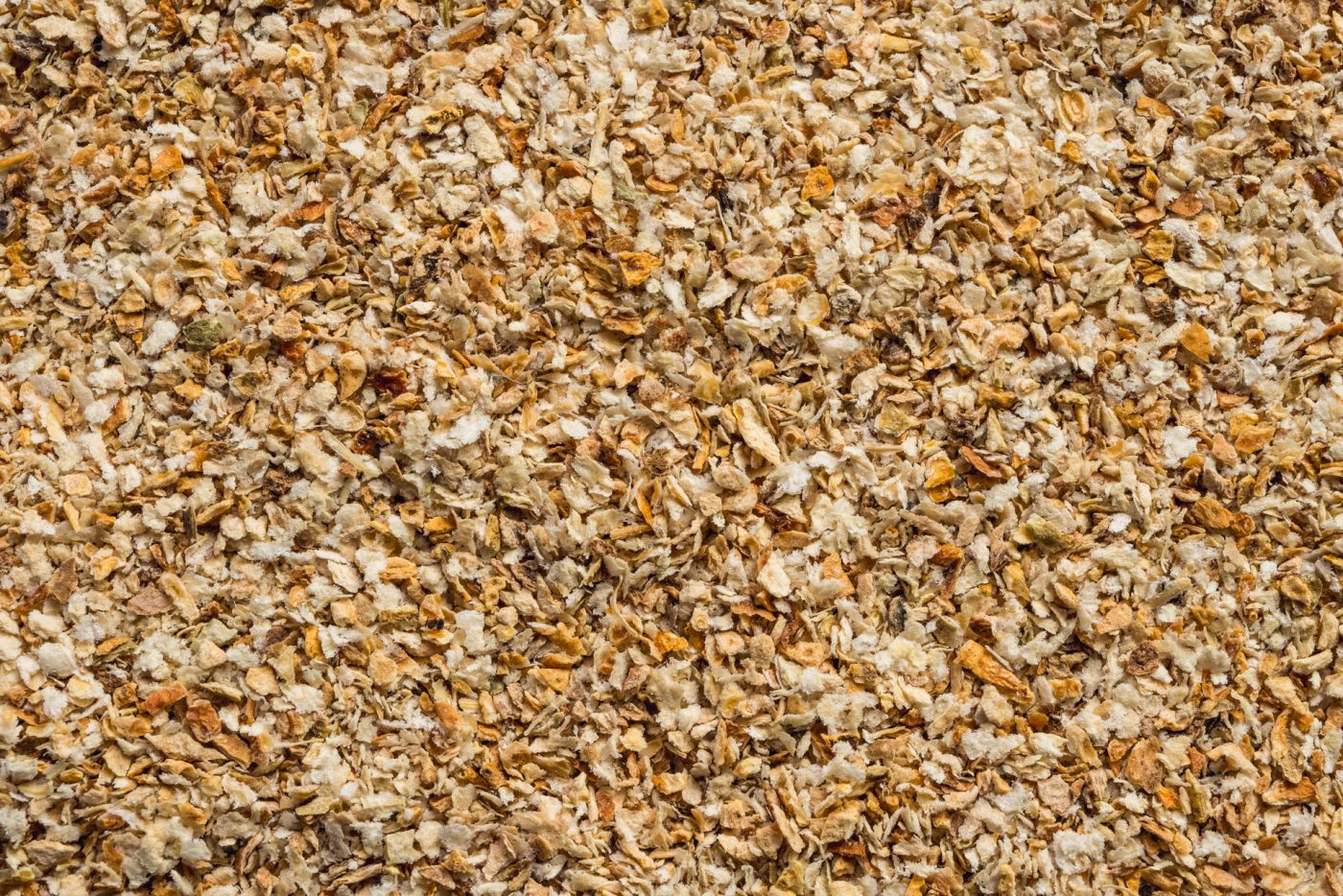
Elderberry, Sambucus nigra
Elderberry has been known since ancient times for its therapeutic qualities effective in treating fevers and infections. The active ingredients in elderflower have the ability to increase body sweating so as to promote toxin elimination and temperature restraint during febrile states. The plant’s flavones have a vasodilating action that unblocks the airways in cases of nasal congestion, coughs and colds.
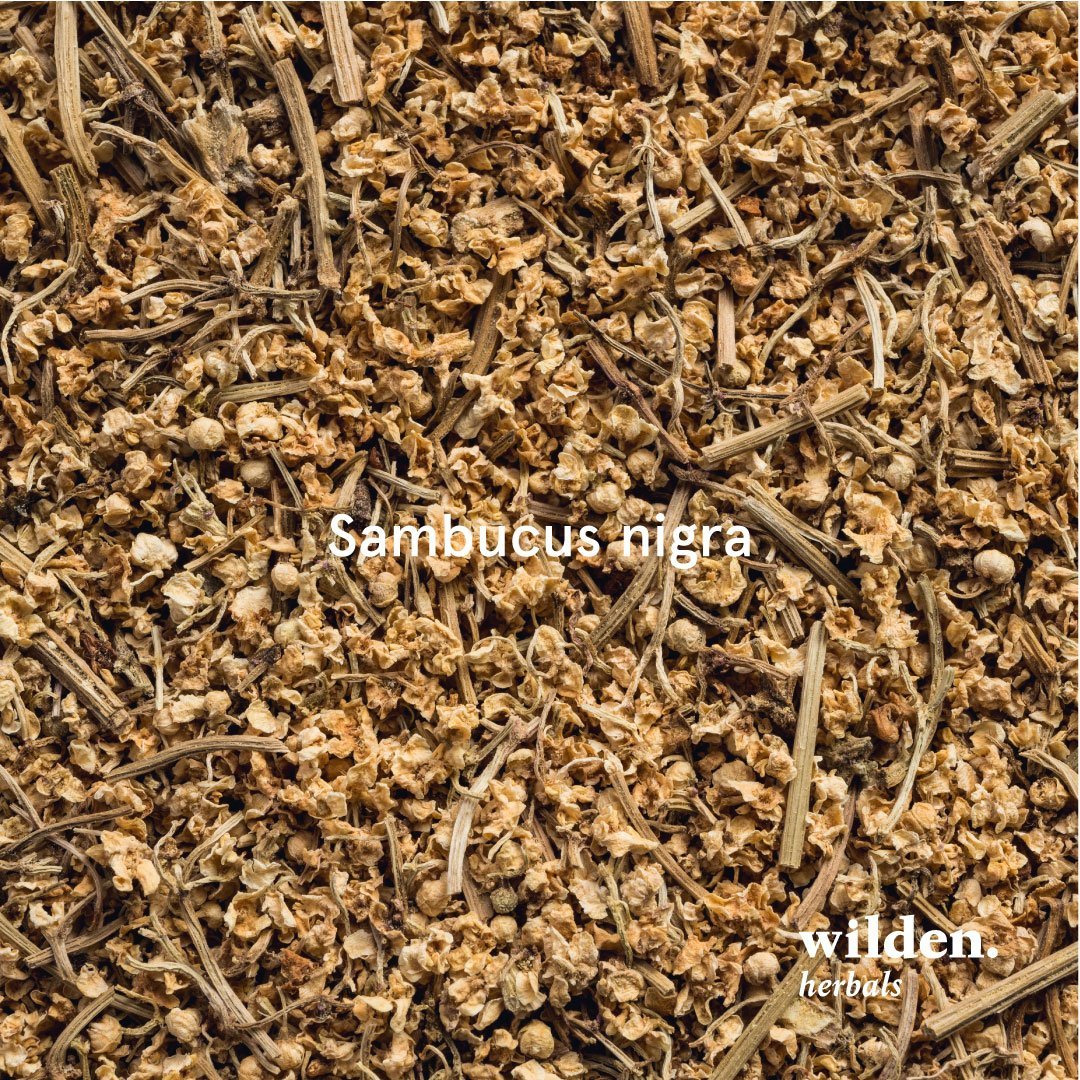
Remedium No. 2 – Boost herbal tea is a natural concentrate of antioxidants and immune-stimulants; a drink that could be called an “elixir of life” because of its concentrate of beneficial plants and spices. Complex, yet simple; just like a cup of herbal tea to sip whenever you want.
© 2021 Wilden.herbals – Contents are the property of Wilden.herbals S.r.l., reproduction is prohibited
Sources:
- Wagner, H., & Ulrich-Merzenich, G. (2013). Evidence and rational based research on Chinese drugs. Wien: Springer.
- Phytotherapy, rational use of plant drugs, F. Capasso G. Grandolini A.A. Izzo Springer
- Bates SH, Jones RB, Bailey CJ, Insulin-like effect of pinitol, British Journal of Pharmacology 2000; 130(8): 1944-1948
- Kamara BI, et al, Polyphenols from honeybush tea, Journal Agricultural Food Chemistry 2003; 51(13): 3874-3879
- Kenneth M. Klemow, Andrew Bartlow and Justin Crawford, Herbal Medicine: Biomolecular and Clinical Aspects.
- Barnes Joan, Anderson A. Linda, Phillipson David J. Herbal Medicines, Pharmaceutical Press 2007.
- Blumenthal M., Goldberg A., Brinckmann J (Ed). Expanded Commission E Monographs, American Botanical Council and Integrative Medicine Communications 2000.
- European Scientific Cooperative on Phytotherapy (Ed). Melissea folium, ESCOP Monographs on the Medicinal Uses of Plants Drugs, Centre for Complementary Health Studies, Université d’Exeter 1996.
- Franchomme P. et Pénoël D. L’aromathérapie exactement. Encyclopédie de l’utilisation thérapeutique des huiles essentielles. (Aromatherapy exactly. Eencyclopedia of the therapeutic use of essential oils).
- Roger Jollois Éditeur 1990 Pizzorno JE Jr, Murray Michael T (Ed). Textbook of Natural Medicine, Churchill Livingstone 2006
- Organisation mondiale de la santé (World Health Organization). WHO monographs on selected medicinal plants, vol. 2, Suisse, 2002.

